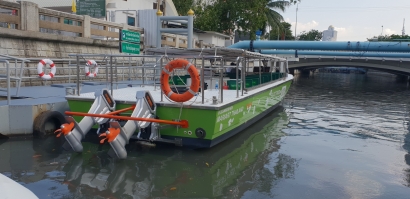
Since the early 2010s, sales of pure electric and hybrid vessels have grown steadily, mainly driven by the need to reduce local pollution of NOx, SOx and particulate matter in a handful of emission control areas that are local to coastlines. Vessel operators have chiefly turned to low-sulphur fuels such as LNG to comply, as well as invested in scrubbers to clean tail-pipe gases before they are released. However, many have invested in electric and hybrid powertrains. The study reports this growth is expected to accelerate after 2020 when now-confirmed global sulphur regulations are enforced by the International Maritime Organisation.
Another strong driver, particularly for commercial vessels, is fuel economy. Many commercial vessels are installed with oversized engines in order to handle peaks in power demand. By adding batteries to handle transient loads, engines can be downsized and set to run consistently at high load -- where they were designed to run efficiently. According to the research, depending on the vessel type, the resultant fuel savings can reach 10 - 30 percent, translating to hundreds of thousands of dollars worth of savings annually. For a $500,000 battery in a mid-sized vessel, short ROIs make the investment attractive.
One of the big challenges for electric and hybrid vessels is the pressure they put on the onshore local distribution network by drawing MW of current in short periods of time. One solution to this has been to install shore-side stationary storage to help handle the additional load, and to delay infrastructure upgrades. Shore-side solutions could even come in the form of second-life maritime batteries, which are already rugged and resistant to water ingress, as dismantling them to recycle the raw materials wastes the engineering. The first used batteries are likely to be returned in the early 2020s, a decade after the first hybrid vessels were christened.
The report states that by volume, electric recreational boating represents the largest and fastest transformation, with tens of thousands on the water today; by value the C&I segment is the largest due to the cost of multimillion-dollar vessels. Although a transition is underway, the new report finds ultimately there will be a coexistence with today’s propulsion technologies because of upfront cost, range anxiety, lack of charging infrastructure and the slowness of change in the marine industry.

